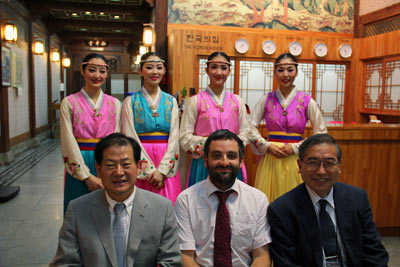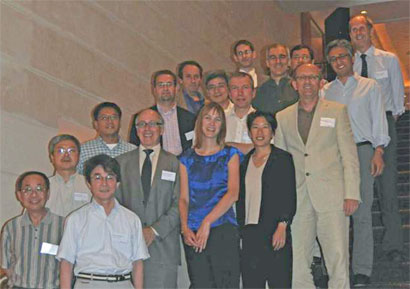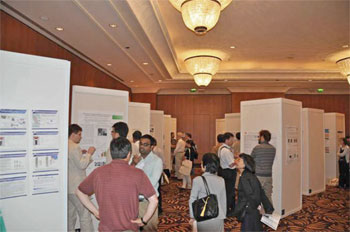We left the rain of Osaka and just one hour later arrived bathed in Korean sunshine at the impressive Incheon Airport. We followed a relaxed dinner in the hotel with a walk around Seoul’s lively streets. It seems the city does not sleep – it was Wednesday evening but it seemed like a Friday or Saturday. Apparently it’s the same every night! The day finished with discussions over red wine about who would win the 2010 Nobel prize in chemistry, but not before some confusion over price and the corking of a bottle…..
Professor Nam opened day one of the ChemComm symposium at Ewha Womans University and I was invited to say a few words. Short and sweet with many thanks!
After finishing proceedings in Japan, Professor Harry Gray opened the show in Korea. He spoke about his very early work in the 1960’s on the metal-oxo wall, before moving on to his current focus: building an artificial leaf without wires aided by a solar army of high school kids (see the interesting critical review by Woodhouse and Parkinson from the Chem Soc Rev Renewable Energy themed issue and the EES Opinion article by Parkinson). Professor Fukuzumi followed but he didn’t need a microphone – his voice boomed!
At lunch I took a stroll around campus. The building where the symposium was being held was truly spectacular but I passed very few men on campus. Now I understand: Ehwa Womans University.
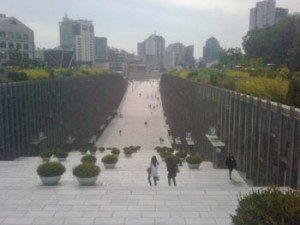
The night ended with a dinner reception for all speakers and a mixture of drinks, including a local favourite, the atomic bomb (soju and beer).
The second day continued in equally impressive style. High quality talks on water oxidation from Brudvig and Llobet were followed by the ChemComm speakers, Jonathan Sessler, Adrian Mulholland and Luet Wong. To finish the day, Jonathan Sessler became the ruthless session chair under strict instructions to finish by 6pm. Five presentations were given by young researchers and assistant professors. It was nice to see Youngmin You give an excellent talk on the sensing of biological zinc. The results had been published in ChemComm and highlighted in Nature Chemical Biology.
In closing the symposium, Professors Nam and Fukuzumi thanked the speakers but also the tremendous efforts of the local organisers, and in particular, girl power! A fabulous Korean banquet and performance showcasing Korean music and drums was the perfect way to finish the symposium…well almost. That honour was given to Adrian Mulholland, who in true British style could not resist the opportunity to join the performers on stage and bang the drum…
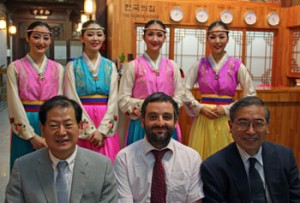
This was a tremendous serious of events, intense, with around 50 lectures in four days. The hospitality from both organisers was incredible and the selection and quality of the science was first rate. A big thank you also to Luet, Jonathan and Adrian for doing such a great job as the ChemComm speakers.
Next stop is Japan and China in May 2011 for the 5th ChemComm Symposia on organic chemistry and catalysis. Sign up for the ChemComm Chronicle and e-alert to receive more information as soon as it is available.


